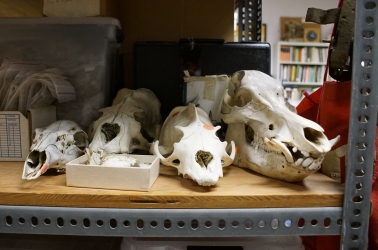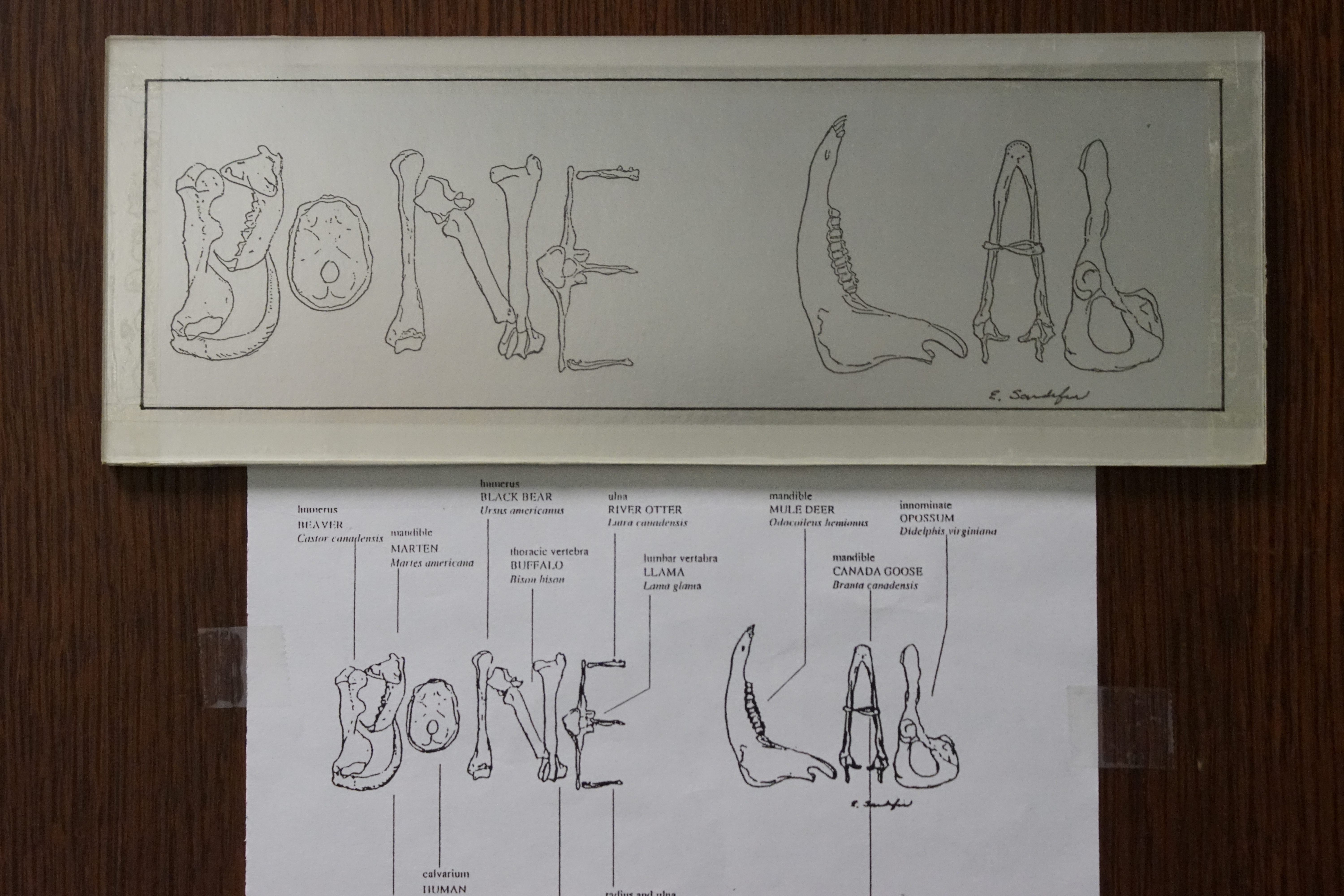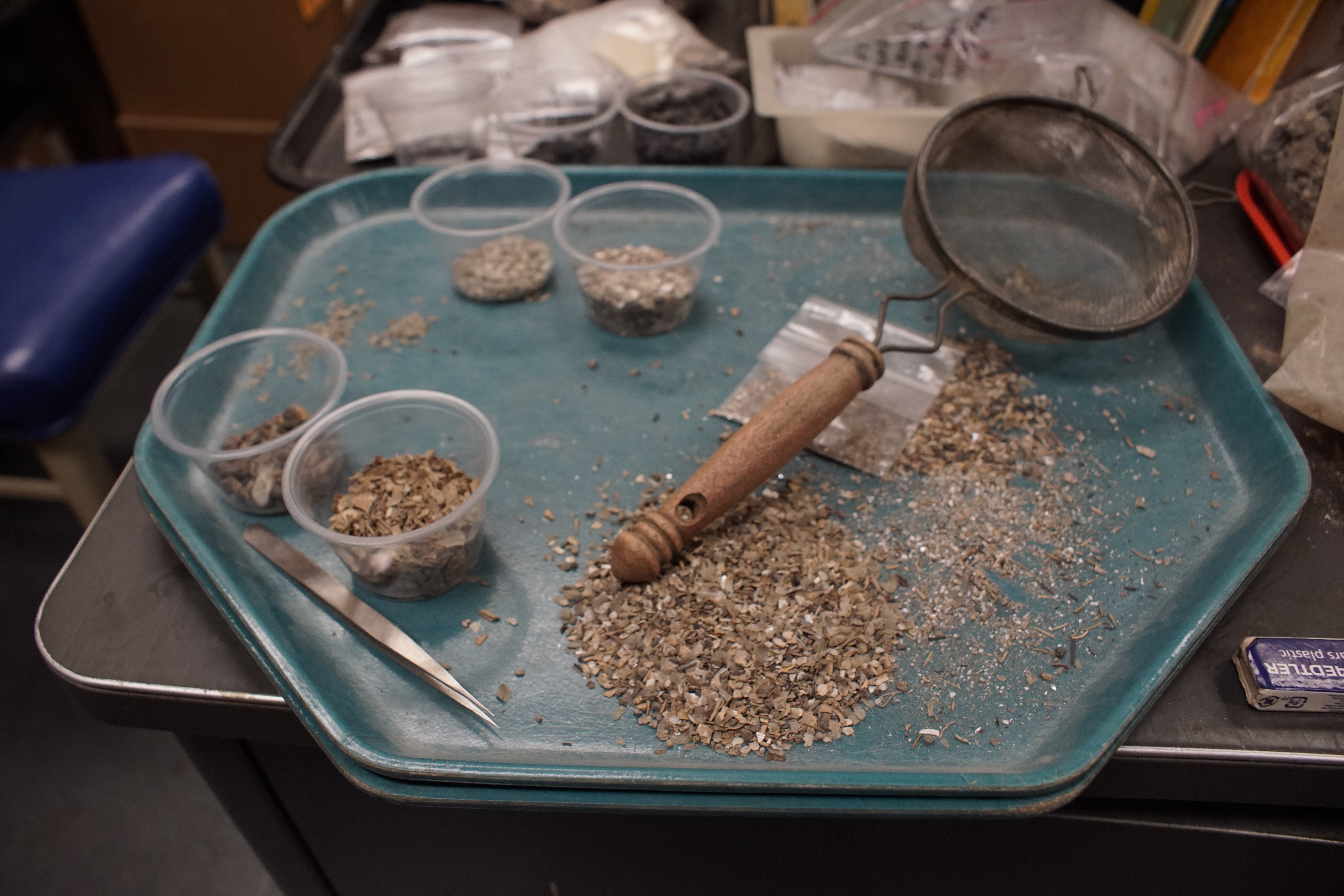Latest in the Labs: The Zooarchaeology Laboratory

“The Bone Lab” may sound like a new TV pilot, but it is actually how everyone at the Cotsen Institute refers to the Zooarchaeology Laboratory. Founded in 1989, it is one of the oldest research facilities at the Cotsen Institute.
The nickname could reflect the more than 5000 vertebrate skeletal specimens of fish, amphibians, reptiles, birds and mammals that represent the comparative osteological collection in the laboratory. There are also 10,000 mollusk specimens. According to director and senior museum scientist Tom Wake, “we have the capacity to identify and analyze vertebrate and invertebrate faunal remains from many places. We get teeth, bones, and fragmented bones. In fact, anything that can be done to a bone we have probably seen.” 
“It would not surprise me if people say that this is one of the more active laboratories because of the amount of work that I do with students,” Wake said. “I am receptive to people dropping by and having discussions and hopefully developing collaborative ideas.” The Bone Lab provides ample workspace for students and researchers, “as well as a number of computers for data entry and analysis, plus several dissecting microscopes.”
Wake has been director of the lab since 1996 and is personally available to consult with students, assist setting up volunteer or independent study projects and develop research designs, sampling protocols, as well as to evaluate the results of interested investigators. He also does cross-disciplinary work in trying to garner greater attention for the application of zooarchaeology to conservation biology.
“That involves reviewing archaeological faunal remains from the Holocene fossil record and using that data to inform conservation biologists and managers about what animals were present in an area 5000 years ago or 2000 years ago, or some time in the Pleistocene, as opposed to today,” he explained. “So it is a little more fine-grained and has the potential to demonstrate the presence or absence of endangered species or currently endangered species on the landscape. That allows us to make assumptions about past known ranges.” The ultimate goal in identification is to take a complete bone specimen and identify the species, according to Wake. “We are looking for relative age; adult versus juvenile and evidence of human manipulation such as cut marks, chop marks, marrow extraction, cooking or heating, and post-depositional processes.”

Wake, who is assistant adjunct professor in the department of Anthropology, regularly teaches laboratory-based zooarchaeology courses, a course in experimental archaeology, as well as courses entitled “The Archaeology of Lower Central America” and “The Archaeology of Extinction.” In addition, he is currently working on a book on the faunal studies that he has done in Mexico and Guatemala over the past 20 years. He also started a project with several students to organize, update, catalog, and provide state accession numbers to his dissertation material—vertebrate bone and worked bone artifacts from Fort Ross, California—and ultimately to send this for permanent storage to the California State Parks facility in Sacramento.
In a project related to his work in Panama, he is working with Carly Pope, a new graduate student at the Cotsen Institute, who wants to do her dissertation research on ceramics from archaeological sites in Panama that have been excavated between 2003 and 2014 in a project that Wake calls “his baby,” entitled the “Proyecto Arqueológico Sitio Drago.” He explains that he has learned a lot about ceramics, but that she is a budding expert who wants to focus her dissertation on the large sample of ceramics they have collected that includes diagnostic vessel fragments from as far as 250 miles (400 km.) away in southwestern Nicaragua and central Panama.
The Bone Lab was one of two laboratories featured in the Winter celebration of the Cotsen Institute, which provided an opportunity for students and faculty to become familiar with the facilities within the Cotsen Institute. For more information, contact Tom Wake, twake@ucla.edu or click here.
Published on February 26, 2020.


